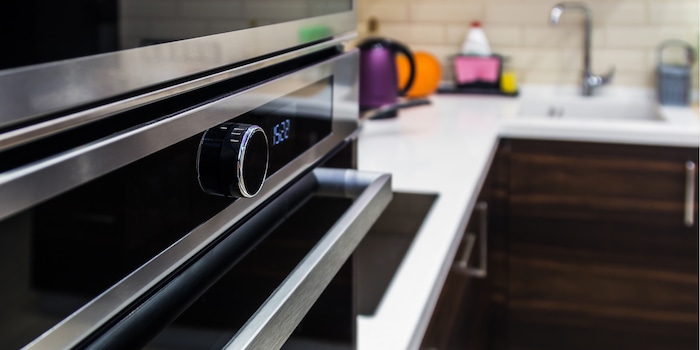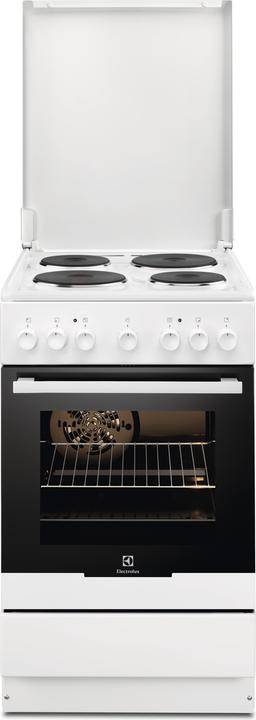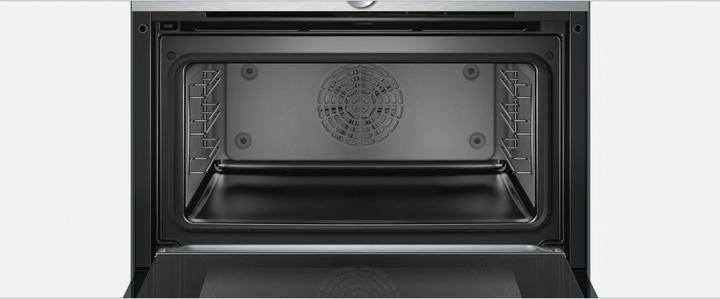

Find the right appliance for your kitchen: oven, hob, steamer or microwave
Are you moving into a house and still need the large appliances to go with it? Then you'll find what you're looking for here. I'll explain the differences between built-in hobs, ovens and other appliances.
Cooking range and oven
If you are looking for a new oven or hob, you will notice that these terms are not clearly differentiated in everyday language. However, manufacturers make a clear distinction here, which can be confusing for customers.
Cooking range
As the name suggests, a cooking range is used in combination with a hob. This means that a hob is positioned under the hob. You will often find the controls for the hob on the hob and not directly on the hob. This coupling means that the cooker and hob are connected to the power supply together. A three-phase connection is required for this.

Find hobs matching the cookers here
Oven
The oven is completely independent and has no connection to the hob. In an oven, you will only find the controls for the appliance itself and the power supply is also independent of the hob. The oven can be supplied with power via a simple socket. This gives you more freedom when positioning the appliance.
Cooking hob or oven?
Ovens are in vogue. They have the advantage over hobs that, as already mentioned, they can be integrated practically anywhere in the kitchen. Many people appreciate the fact that the oven can be installed at working height. This makes it much easier to take a look inside the oven. Having two separate units also makes it easier to replace one of them in the event of a defect or other new purchase. On the other hand, buying an oven and self-contained hob is usually a little more expensive than buying a hob. When buying a hob, you just need to make sure that the hob is compatible with the cooker. The manufacturer must be the same. You can also use ovens from other manufacturers.
Built-in steamers and microwaves
A steamer works with steam, which gently heats and cooks the food - just like a steam cooker. With microwaves, as the name suggests, the food is heated using microwaves. Many models also have defrosting functions and other practical modes that a steamer does not offer to the same extent. Mixed models that offer both main functions can be found under built-in ovens.
Steamer
There are various models of built-in steamers. You can choose a model with a water connection or one with a water tank. With a smaller water tank volume, you may need to top up the water during steam cooking, which will not happen with a steamer with a water connection. The models also differ in terms of cooking volume. You can choose between smaller and larger models from 36 - 68 litres.
Microwave
The power specifications for built-in microwaves vary greatly. It depends on how large the cooking chamber of the microwave is and what functions the appliance has. A higher power means that the microwave oven needs less time to heat the food, but also consumes more power. You should also pay attention to the size of the cooking chamber. If you only need the microwave for defrosting and heating, a capacity of around 15 - 20 litres may be sufficient. If you choose a model with a larger capacity, you should bear in mind that larger cooking chambers also require more time to heat up your food. A large capacity is ideal if you want to use the microwave as a substitute for an oven. You can even prepare ready-made pizzas or whole roast chickens in it.
Warming drawer
Once the food is on the plate and then on the table, it's already cold again. Simply press a button to preheat your plates in a warming drawer. Some plate warmers can even be opened at the touch of a finger. There are also four power levels and the temperature can be regulated between 30 °C and 80 °C. Depending on the warming drawer, the various models have additional functions. For example, some can not only heat your dishes, but also defrost or preheat food.
To all built-in warming drawers
The right size: European and Swiss standards
As with all large appliances, there are European and Swiss standards for kitchen appliances. The Swiss standard is called "CH-Norm 55 cm", which simply means that the appliances are 55 centimetres wide. This also applies to the "Euro Norm 45 or 60". Accordingly, the appliances are 45 or 60 centimetres wide. This information is important for built-in kitchen appliances so that the appliance fits into the intended recess.
Friends, family, cats and good wine are my lifeblood.




